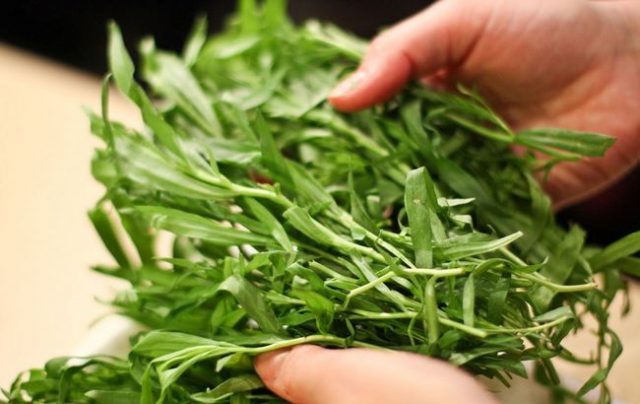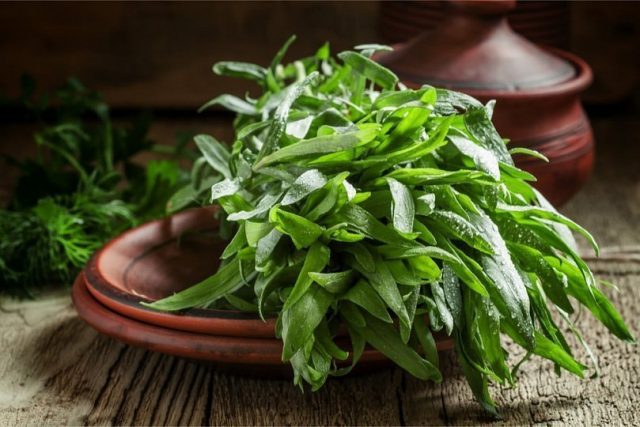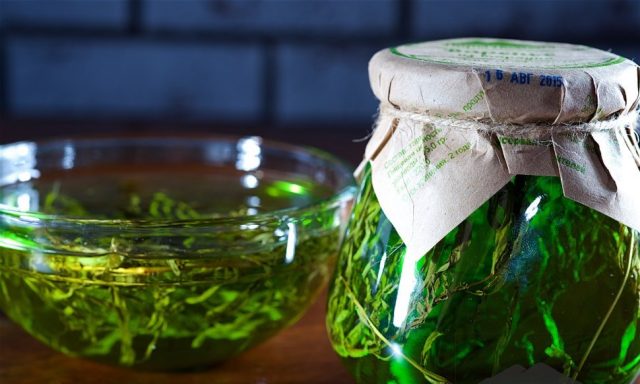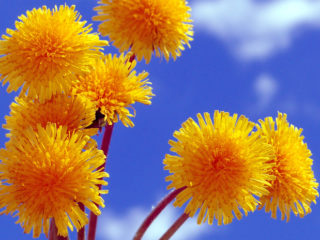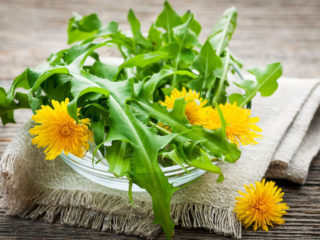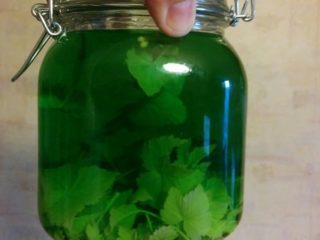Content
The herb Tarragon (Tarragon), the properties and use of which are determined by its rich vitamin composition, is known primarily as a component of lemonades and tea mixtures. However, the plant is also used as a food additive in soups and hot dishes due to its unusual rich taste. In addition, thanks to a number of medicinal properties, Tarragon has found wide use in folk medicine and pharmacology. In particular, regular use of Tarragon herb has a calming effect on the human nervous system and significantly alleviates the occurrence of colds.
On the other hand, exceeding the daily norm of a plant can turn its benefits into harm, so before taking medications that contain Tarragon, you should consult a specialist.
Composition of tarragon
The specific taste and medicinal properties of Tarragon are based on the beneficial substances it contains:
- essential oils (sabinene, myrcene, sesquiterpene fraction);
- alkaloids;
- flavonoids;
- phytosterols;
- tannins;
- fatty acid;
- macro- and microelements (manganese, magnesium, copper, calcium, potassium, coumarin, phosphorus, selenium, sodium, zinc, iron, iodine).
Vitamin content in tarragon
Tarragon herb contains the following vitamins in large quantities:
- A (retinol);
- group B (thiamine, riboflavin, adermin);
- C;
- D;
- E;
- TO;
- RR.
How many calories are in tarragon?
The energy value of 100 g of Tarragon is 25 kcal. This indicator allows nutritionists to classify the plant as a low-calorie food, the moderate consumption of which contributes to the process of weight loss.
Useful properties and contraindications of tarragon (tarragon)
The beneficial properties of Tarragon determine the main areas of application of the plant and indications for use. The herb Tarragon affects the human body as follows:
- renews bone tissue and thereby alleviates the symptoms of arthritis, rheumatism and arthrosis;
- normalizes the functioning of the genitourinary system, which is why the health benefits for men are obvious - Tarragon increases potency;
- restores the menstrual cycle in women;
- relieves fatigue and tension, which helps with anxiety, neuroses and sleep disorders;
- strengthens the immune system due to the presence of enzymes in the leaves that destroy bacteria and viruses - tarragon tea for colds and flu will speed up recovery;
- improves appetite and stimulates metabolism;
- normalizes kidney function;
- lowers blood pressure - this beneficial property is used in the treatment of varicose veins, hypertension and thrombosis;
- relieves swelling due to its diuretic properties, removes toxins, waste and excess moisture from the body;
- relieves toothache - to do this, just chew 1-2 leaves of the plant;
- when used externally, moisturizes, nourishes skin and hair, evens out complexion;
- strengthens the walls of blood vessels;
- has an anthelmintic effect;
- acts as a preventative against the development of cancerous tumors;
- has an anticonvulsant effect;
- relieves gum inflammation;
- relieves intestinal spasms, relieves symptoms of flatulence;
- has an antiseptic effect when applied directly to small wounds and burns.
What are the benefits of tarragon for the body?
Traditional healers have been using the herb for many centuries due to its beneficial properties to treat a wide range of diseases, from bronchitis and tonsillitis to neuroses and insomnia. Over time, the benefits of Tarragon were recognized at the level of official medicine.
What are the benefits of tarragon for women?
Tarragon normalizes the functioning of the genitourinary system in women, which helps normalize the regularity of the menstrual cycle.For irregular menstruation, it is recommended to drink Tarragon tea daily for 5-7 days, 1-2 cups per day. In addition, due to its diuretic properties, decoctions and infusions from the plant are widely used to treat cystitis.
Separately, the value of herbs in cosmetology should be emphasized. The beneficial properties of Tarragon for women in this area are that masks and compresses from parts of the plant not only nourish and moisturize the skin, but also remove minor age-related wrinkles.
If you freeze the decoction in ice containers, the beneficial properties of the plant will be increased by increasing skin tone and giving it firmness and elasticity.
The benefit of Tarragon for women is also that the substances contained in the herb strengthen the hair structure and restore damaged hair follicles. Regularly applying Tarragon masks to your hair helps solve the problem of dry scalp.
Can pregnant women eat tarragon?
Despite the fact that Tarragon has many beneficial properties for women, it is contraindicated for use by pregnant women. This is explained by the fact that the leaves of the plant contain a large amount of essential oils, which can cause miscarriage or pathologies of fetal development.
The benefits and harms of tarragon for men
The beneficial properties of Tarragon determine the use of the plant for the treatment of such male problems as inflammation of the prostate gland, erectile dysfunction and disruption of the endocrine glands.
Regular consumption of Tarragon in moderate quantities increases potency and improves the functioning of the genitourinary system of men as a whole.In addition, according to recent studies, the substances contained in the herb promote muscle gain. This is the benefit of the plant for men who are actively involved in sports.
Is tarragon okay for children?
It is not recommended to give Tarragon drinks and medicines to children under 10 years of age, since the high content of some substances in the leaves of the plant can cause serious harm to the child’s health. Before you start taking it, you should consult your doctor and get tested for possible allergic reactions.
Is tarragon good for weight loss?
The beneficial properties of the herb Tarragon (Tarragon) include normalization of metabolism, which is important when losing weight. In addition, the plant is low-calorie, so it is often included in strict diets.
The plant is included in kefir and salt-free diets, but is not limited to them.
Diet option No. 1:
- breakfast – omelette with chopped fresh Tarragon and vegetables, tea;
- lunch - skim cheese;
- dinner – fish, salad with tarragon and vegetables;
- afternoon tea – smoothie or cocktail based on Tarragon with the addition of kefir;
- dinner – lean meat with vegetables and tarragon.
This is a fairly satisfying, but uncomplicated diet. She allows almost everything except smoked foods, sugar, baked goods and overly spicy foods. The diet is designed for a week.
Diet option No. 2:
- breakfast – omelet or scrambled eggs with tarragon herb and vegetables;
- lunch – salad with Tarragon;
- dinner – light soup with Tarragon;
- afternoon tea - salad;
- dinner – fish with stewed vegetables and Tarragon herb.
This diet is designed for 3 days. Salt is completely excluded from the diet.
Diets with the herb Tarragon help remove excess moisture from the body and relieve swelling. Unloading with the help of this plant involves making smoothies or cocktails. To do this, you can mix 1 liter of kefir with finely chopped fresh tarragon and drink the resulting mixture throughout the day.
The use of tarragon herb in folk medicine
Due to its beneficial properties, tarragon has found wide use in folk medicine, where it has been used as a base for ointments, infusions and decoctions for many centuries.
One of the most common areas of use of the plant is the treatment of skin diseases:
- eczema;
- psoriasis;
- dermatitis.
As well as burns and minor abrasions.
To do this, use an ointment prepared according to the following recipe:
- 2 tbsp. l. Tarragon leaves are kneaded in a mortar to a green pulp.
- The resulting mass is mixed with 100 g of butter.
- The mixture is placed in a water bath and boiled for 3-5 minutes.
- Then the ointment base is infused for some time and cooled.
- When the mixture has cooled, it is diluted with 1 tbsp. l. honey
The finished ointment is placed in the refrigerator until the first use.
Tarragon is no less effective in the fight against itching and rashes. The following decoction helps relieve skin irritation:
- Tarragon, thyme, chamomile and burdock root are mixed in a ratio of 1:1:2:3.
- 1 tbsp. l. the resulting mixture is poured with 1 tbsp. boiling water
- The solution is infused for half an hour, after which it is cooled and decanted.
The daily dose of this decoction is 2 tbsp. It can be used not only for oral administration, but also externally in the form of compresses.
The beneficial substances contained in Tarragon help relieve swelling, which is why products based on this plant are used in the treatment of kidney diseases.To relieve swelling, it is recommended to drink a decoction prepared according to the following scheme:
- 20 g of green tarragon is poured into 500 ml of hot water.
- The solution is infused for 25-30 minutes.
- After this time, the decoction is ready for use.
Recommended dosage: 4 times a day, 100 ml. The course of treatment is 3 weeks.
To combat neuroses and chronic fatigue, it is recommended to take the following decoction:
- 1 tbsp. l. Tarragon herbs pour 1 tbsp. boiling water
- The resulting mixture is brewed for an hour.
- Then the greens are drained, after which the broth can be drunk.
Dosage: 3 times a day, 100 g. The break between doses is 2-3 hours. To treat insomnia, the decoction is used to create compresses that are applied to the head.
When treating varicose veins, use the following recipe:
- 2 tbsp. l. plants pour 0.5 liters of kefir.
- Mix everything thoroughly, after which the resulting mixture is applied to a piece of gauze.
- Gauze with the product is applied to the skin with protruding veins for half an hour, attached to the leg with cling film.
Such compresses are done every 1-2 days for 2 months.
Decoctions and infusions according to various recipes can also be used to relieve inflammation of the gums and oral mucosa.
How to use tarragon
The beneficial properties of the herb Tarragon are in demand not only in medicine, but also in cooking, where it is added as a seasoning to hot dishes, salads and sauces. To improve the taste, both dried parts of the plant and green Tarragon are used.
The daily intake of Tarragon is 50 g if these are fresh parts of the plant, and 5 g if dry raw materials are used. The optimal amount of Tarragon tea per day is about 400-500 ml. The daily allowance for children under 12 years of age is half of these numbers.
Tea with tarragon: benefits and harms, rules of administration
The benefit of tea with Tarragon is that it normalizes the functioning of the gastrointestinal tract and promotes better digestion of food. Tarragon teas in combination with other plants relieve intestinal spasms, help with intense gas formation and even out the menstrual cycle in women. In addition, it is an effective means of combating excess weight.
How to brew tarragon herb
There are many recipes for tea with Tarragon, however, the brewing process is almost identical in each case. Only the ingredients differ.
In its most general form, Tarragon tea is brewed as follows:
- 1 tsp. plants pour 1 tbsp. boiling water
- The tea is infused for 20 minutes.
- If desired, sugar or honey is added to the tea, after which the drink is ready to drink.
You can dilute the tea leaves with ½ tsp. ginger Tarragon also goes well with lemon.
Beneficial properties of tarragon with honey
The benefits of Tarragon with honey for the body lie in the anthelmintic properties of this combination. In order to get rid of parasites, you need to mix crushed tarragon leaves with honey in a ratio of 1:10.The resulting mixture is taken 1 tbsp. l. morning and evening on an empty stomach for 3-4 days.
Ointment made from Tarragon herb and honey has a healing effect on wounds and deep abrasions.
The benefits and harms of tarragon jam
Tarragon jam acts as a preventative against colds and viral diseases, especially in winter. It strengthens a person’s weakened immune system and, in case of illness, helps relieve inflammation. It is recommended to take Tarragon jam for sore throat, pneumonia and bronchitis.
Contraindications to taking tarragon
Despite the extensive list of medicinal properties of Tarragon, it also has a number of contraindications:
- It is not recommended to use drugs and folk remedies based on Tarragon in large doses. Too frequent consumption of Tarragon can cause serious harm to the human body. Symptoms indicating an overdose: nausea, vomiting, limb cramps, fainting, diarrhea.
- Tarragon is contraindicated for people with gastritis and gastric ulcers.
- Pregnant women should not take the components of this plant for medicinal purposes - the substances they contain can cause miscarriage. It is also better for nursing mothers to avoid consuming Tarragon.
- You should not combine nutritional supplements and medications based on Tarragon.
- Significantly exceeding the recommended treatment period can cause the development of cancerous tumors.
Allergy to tarragon: symptoms
Despite the obvious benefits that Tarragon herb brings to the body when consumed in moderation, it can also cause harm even if all dosages are observed.The fact is that Tarragon grass is one of the strong allergens, so the start of treatment is often accompanied by an allergic reaction to the plant.
The first signs of an allergy:
- rash;
- severe itching;
- nausea;
- vomit;
- hives;
- atopic dermatitis:
- stool disorder;
- Quincke's edema;
- anaphylactic shock.
Conclusion
The herb Tarragon (Tarragon), the properties and use of which are based on the high concentration of vitamins and microelements in different parts of the plant, is a fairly popular medicinal product in Russia. If the recommended dosages are followed, Tarragon facilitates the progression of various types of diseases and promotes a speedy recovery. The plant is sold dry in pharmacies, however, Tarragon herb fully reveals its beneficial properties in fresh form. Getting green Tarragon is not particularly difficult - it grows well in apartment conditions on the windowsill.
